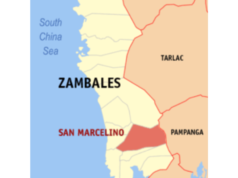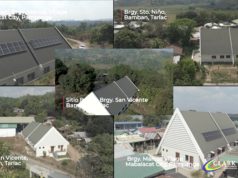Apolonio Anota, Jr. proudly shows different varieties of orchids. Photos courtesy of Ric Gonzales
CLARK FREEPORT – “We are ready for APEC!”
Thus said Atty. Apolonio B. Anota, Jr., executive director of the Nayong Pilipino sa Clark Expo (NPCE), as he showed how the park is ready for the influx of visitors from the Asia Pacific Economic Coooperation (APEC) summit set for January next year.
Foremost in the NPCE showcase is the Orchidarium which houses rare orchid varieties created by the NPCE laboratory which started four years ago. “All orchid growers import their varieties but Nayong Pilipino four years ago started producing its own lines and this is now the fruit of those four years of painstaking research and development,” said Anota.
“God must have loved us so much because of the 25,000 varieties of orchids in the world, about 1,800 can be found in the Philippines with almost all found in the NPCE Orchidarium,” he said. Nineteen “very rare” varieties are now in full bloom at the NPCE Orchidarium, located at the center of the park.
Among the rare varieties created by the NPCE are the Benigno Aquino and Cory Aquino varieties, the latter having about 20,000 found in the park. But Anota said the Cory Aquino varieties will not bloom until the next two years or in 2016.
“These are creations of Nayong Pilipino,” he said proudly. From among the rare varieties are dendrobiums and phalaenopsis with color combinations such as pink and light pink, pink and pink, white and yellow, and white and pink.
An excited Anota said the rare orchids that are now in bloom were never photographed and will be out for the first time because they are first time bloomers. Anota said the rare orchids are not genetically modified but were created through the natural process of pollination.
A television screen in one corner of the laboratory shows how the pollination process is achieved. Dendrobium orchids comprise the largest and most diverse varieties in the world but the rare varieties at the Orchidarium are colored white and purple.
Dendrobiums, which have modest size ovate leaves, usually grow on tree tops which explain why in Greek the name means, “life in a tree.” Anota said NPCE has created six varieties of dendrobium dubbed Dendrobium Nayong Pilipino 1 to 6.
On the other hand, phalaenopsis are characterized by thick fleshy elliptical leaves, said Anota. The NPCE has also created eight varieties of phalaenopsis named Phalaenopsis Nayong Pilipino 1 to 8, he said. “We are the only one that produces phalaenopsis varieties,” Anota said.
Cattleyas, known for their large showy flowers, are also among the rare varieties in the Orchidarium. It’s the most popular orchids in the cut flower trade because they are often worn as corsage. The typical flower has three narrow sepals and three usually broader petals with long elongated leaves.
Anota said in order to grow well and to flower consistently, cattleyas require a good amount of light. Another orchid variety found in the Orchidarium is the vanda. Characterized by long elongated pointed leaves, its most popular specie is the beautiful Waling-Waling, he said.
By February next year, an orchids forest will be in full bloom here, said Anota. He said the propagation and creation of rare orchid varieties is “a giant leap forward” because “this is the first time that the Philippines is producing orchids.”
Anota said Education Secretary Armin Luistro was elated to find that NPCE has created orchids. “Director, this is the kind of education I want to know,” Anota quoted him as saying during his recent visit. However, in order to nurture the rare varieties of orchids, water is pumped out from the lagoon populated by thousands of tilapia heads to the surrounding areas and plants.
Organic fertilizer derived from fish excrement or fish poop that is full of micro nutrients is common fertilizer for the orchids and plants, said Anota. “That’s how we save money for fertilizer,” he said. Meanwhile, Anota said the NPCE is also reintroducing extinct plants indigenous to the Philippines.
Multi-colored vines such as the Blue Jade Vine with long phosphorescence flowers that glow in the dark will soon envelop the walls of the NPCE Museum. “We hope that the coming generations will have the opportunity to see the prettiest of our flora with varieties of colors such as blue, red, and blue red vines within the next five years,” he said.
NPCE is open on All Saints’ Day (Nov. 1) to accommodate visitors from the provinces.




